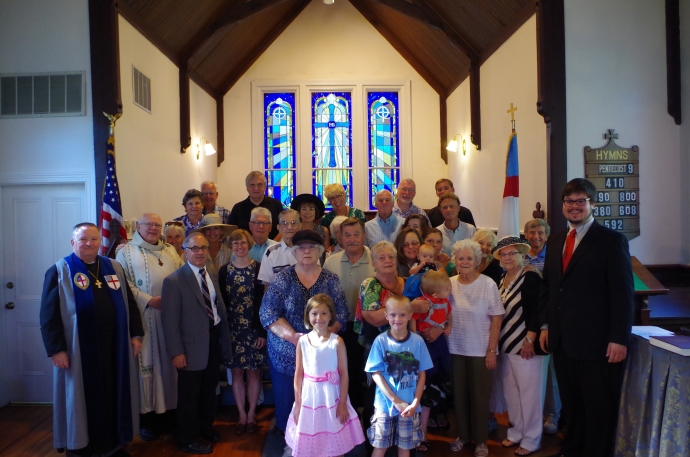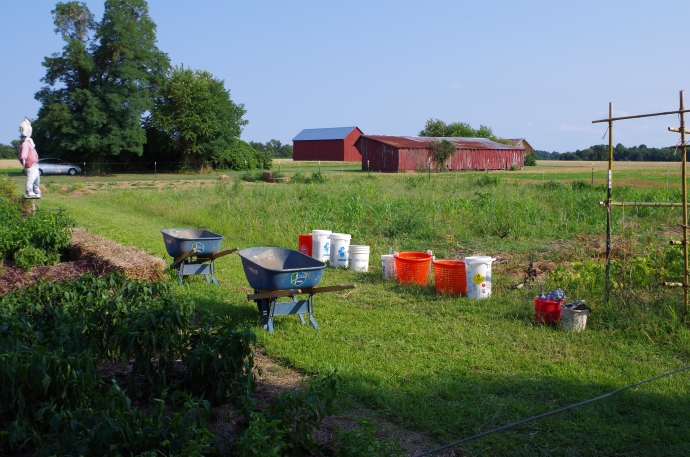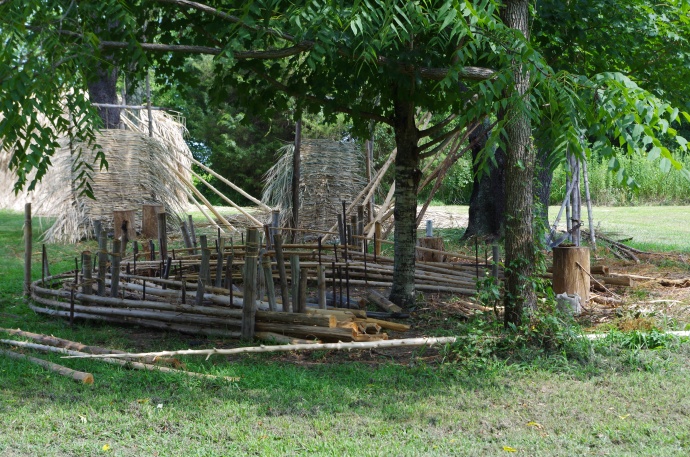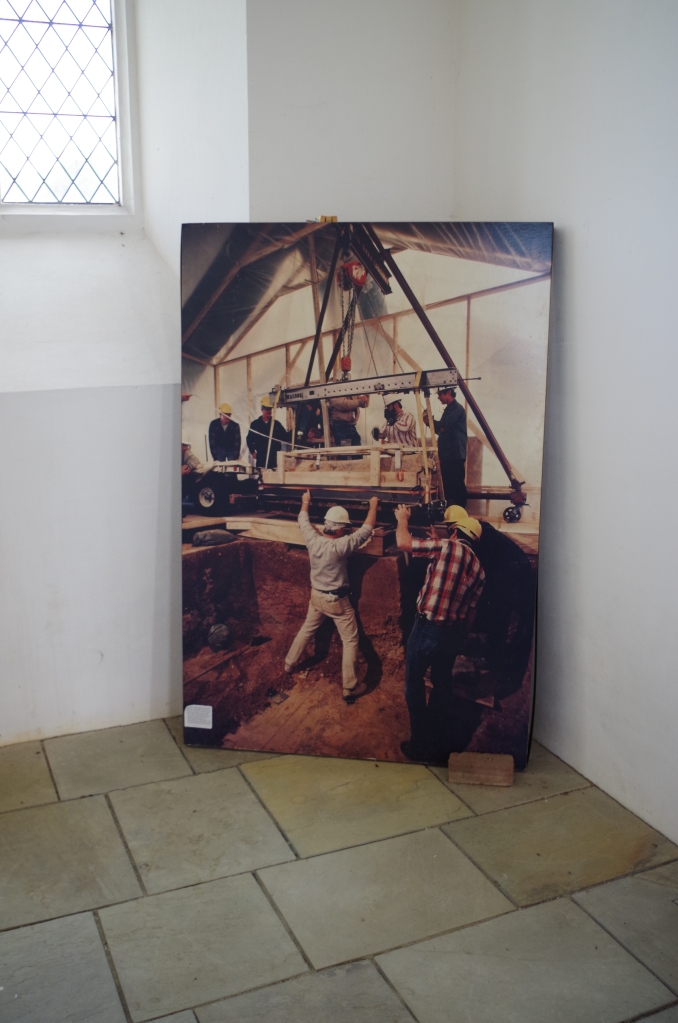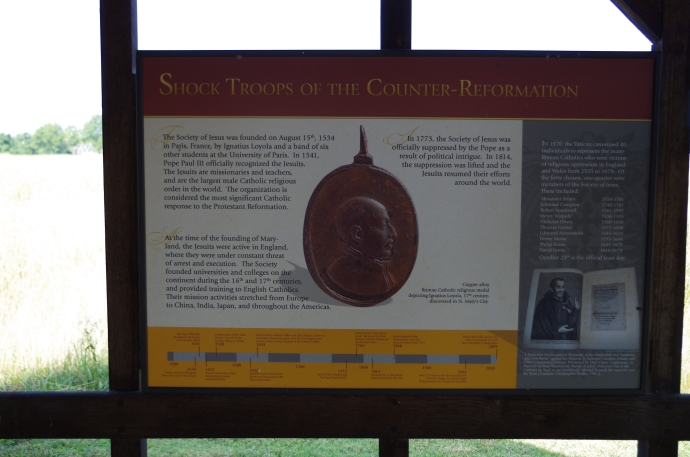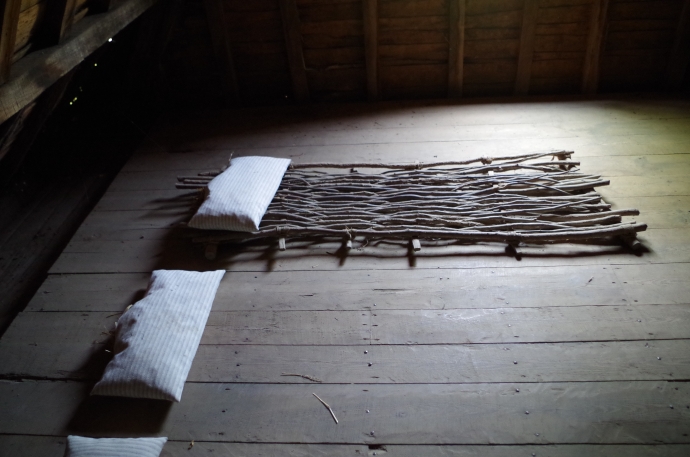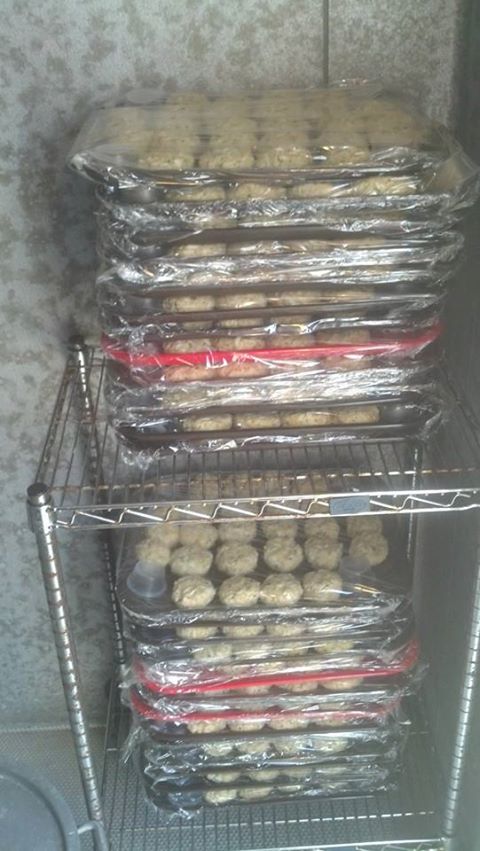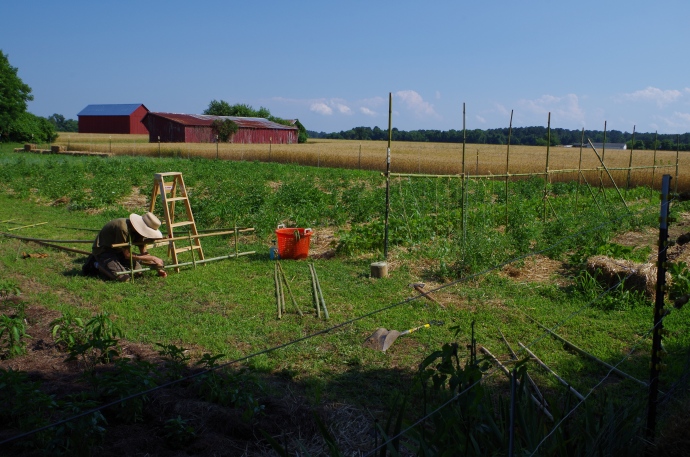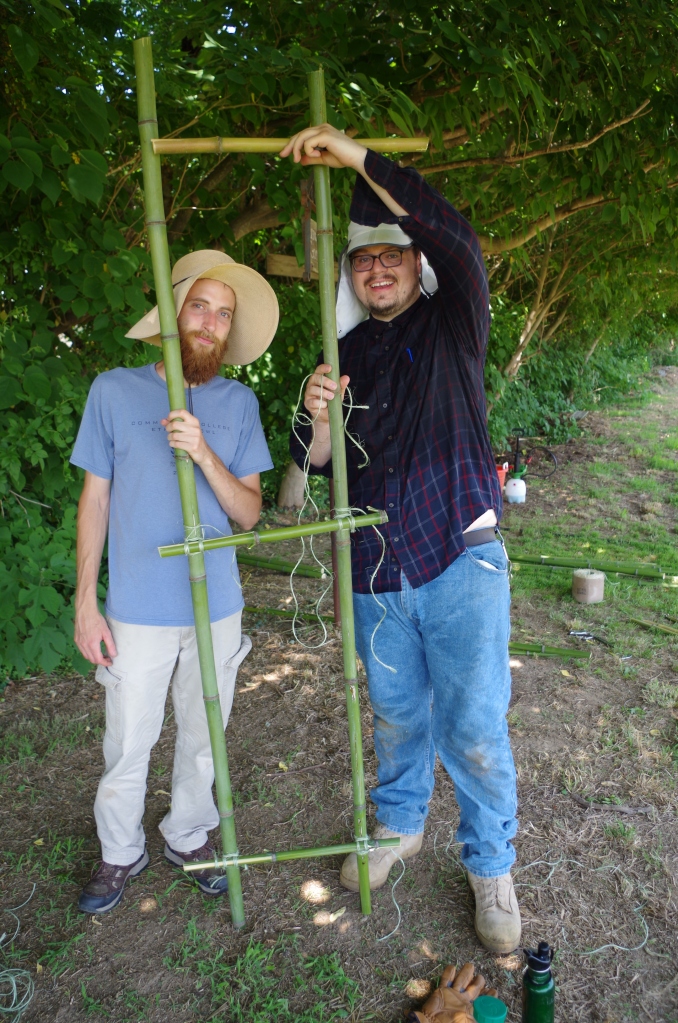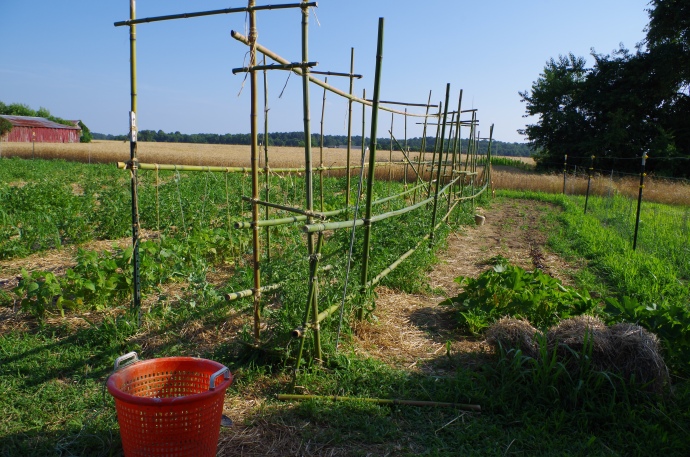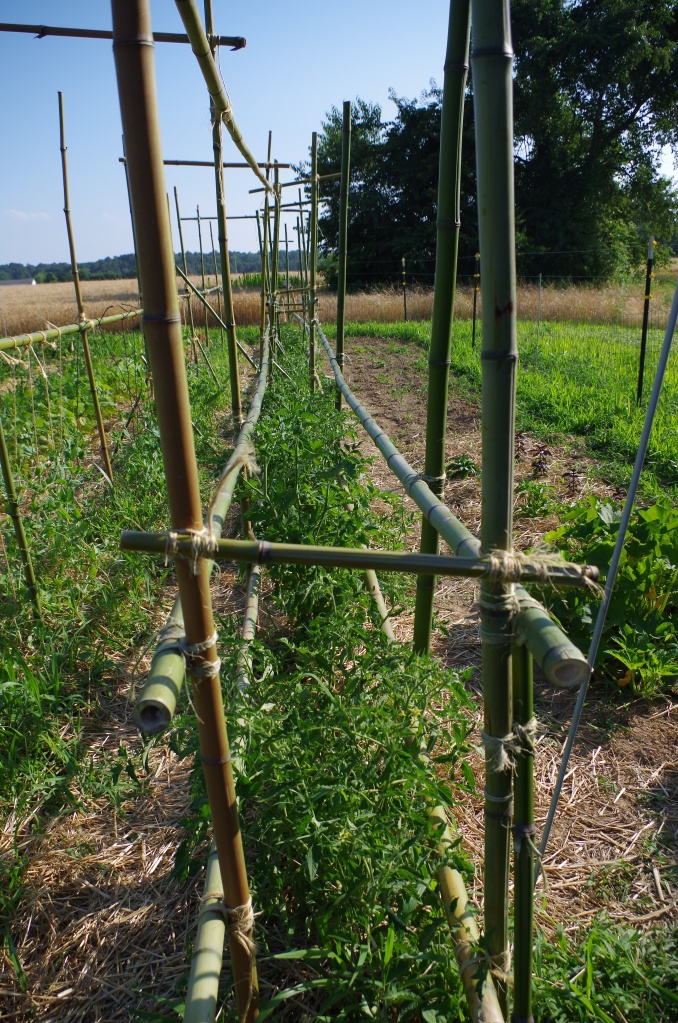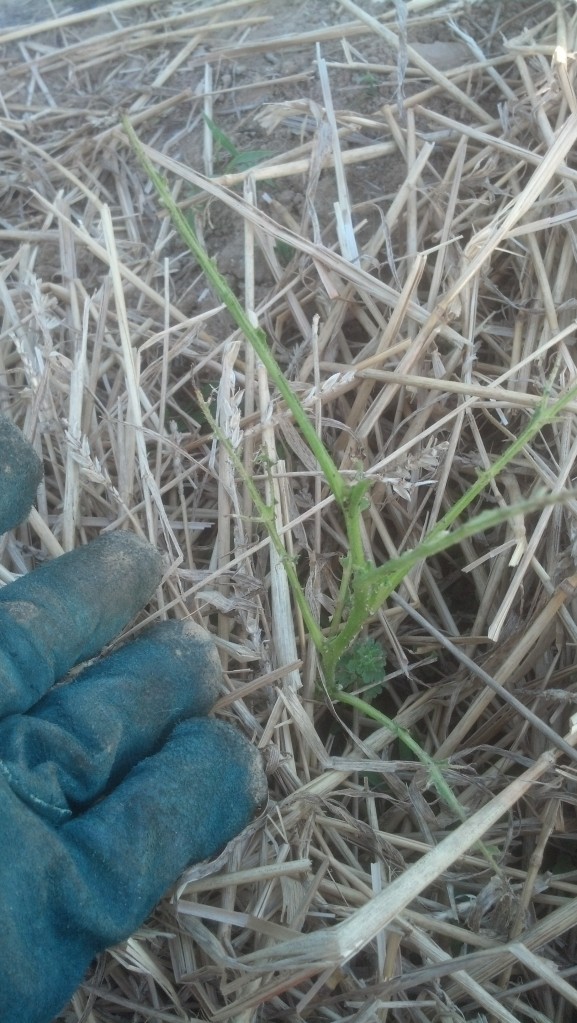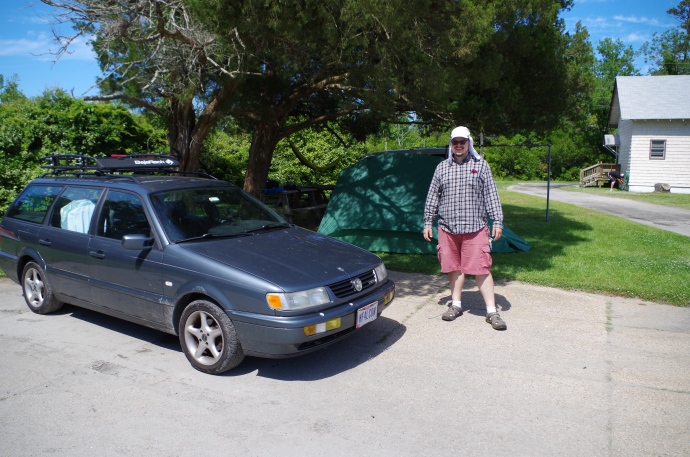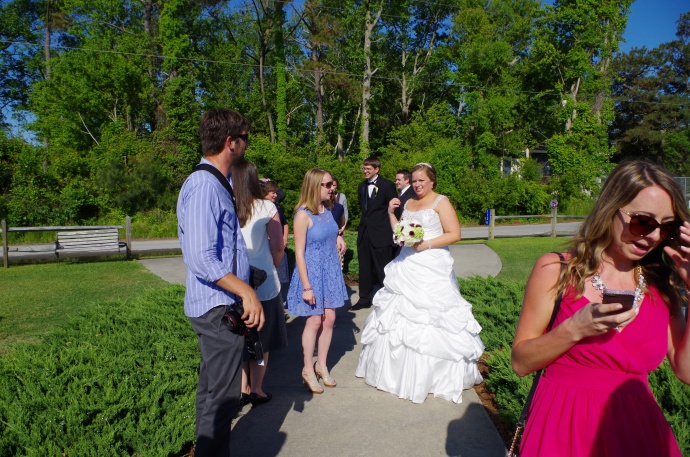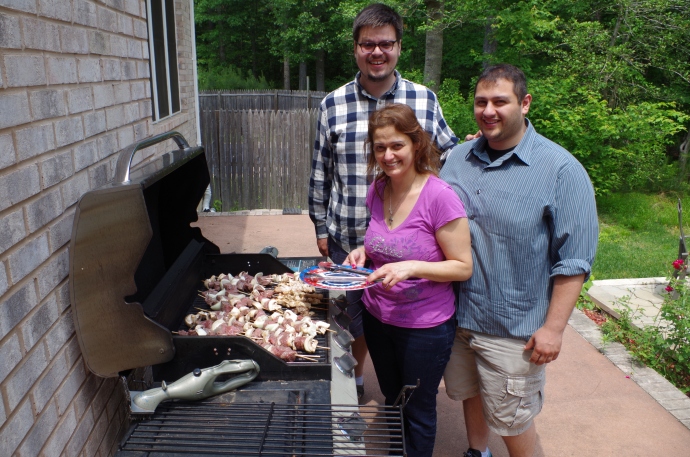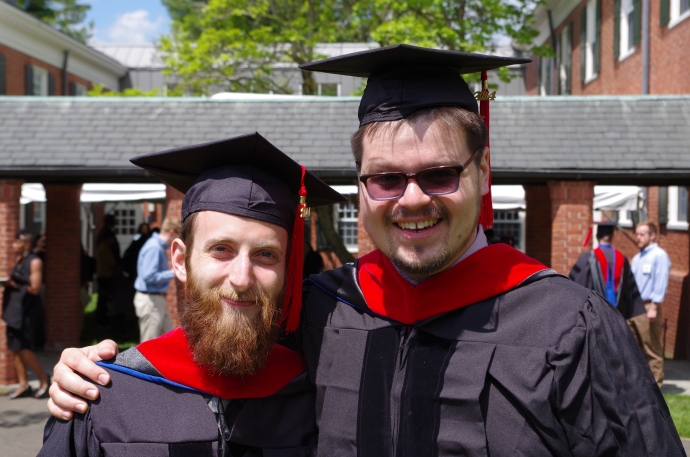Sermons the summer long
So I wanted to collect all of this material into a single blog post, for people who are interested in the preaching I did over the course of my summer here at St. Mary’s Parish. So please, enjoy photos of Mike-whilst-preaching, shots of the two congregations (here at the top, the chapel in Ridge MD, and further down of Trinity Church itself in Saint Mary’s City), and the details of each sermon (as well as links to recorded audio for most of them!):
First sermon – The Umbrella Sermon – (no audio to this one, the sound system was down that week 😦 )
This sermon got me settled into the parish here, and gave me sort of a reputation… because I brought and deployed my sizeable umbrella from the pulpit! The readings I focused on were from 1 Peter and the Gospel of John, and I wanted to impress upon my listeners that putting up too many shields in our lives will end up cutting us off from the people around us.
Text of the sermon is here:Sermon 6-1-2014
Second sermon – the Mount Moriahs of our lives – link to audio here
The texts for this sermon were straight from the lectionary, including from Genesis, Romans, and Matthew. In this sermon, as I speak to within the text, I was struck for the first time ever in reading the story of the binding of Isaac that the two men who traveled to the mount with Abraham and Isaac… are just left there. I spend the sermon considering how often we in our lives have been left at the base of a Moriah as our friends and family try and trudge forward alone.
Text of the sermon is here: sermon 6-28-2014
Third sermon – Sin, grace, and baptism… and Church Point! – link to audio here
I got to pick the texts for this week, going with excerpts from Jeremiah, 1 Corinthians, and Matthew. I also brought a Lutheran hymn I enjoy, My Hope is Built on Nothing Less (maybe not quite performed like this, but close), into the service. The sermon was aimed at the incredible reality of grace – not as some sort of guarantee of things going our way, but at cultivating thankfulness for the things which DIDN’T go wrong today (for instance, I didn’t wake up with an advanced case of tuberculosis… again, and for that I am thankful… again).
Text of the sermon is here: Sermon 7-20-2014
Final sermon – Dreaming in a grounded way – link to audio here
For my last sermon here, I went with the lectionary texts from Genesis, Romans, and Matthew… and of all the random places, my inspiration for the direction I took this week came from a science fiction horror story I just started earlier this week, called The Void. The book focuses on the dangers of sleeping and dreaming while traveling between stars thus far… and because of this motif, I was focused on the titling of Joseph as “this dreamer” in the Old Testament reading. From such humble (odd?) beginnings, I wove together the readings into a plea for carefully dreaming in a grounded way, allowing neither the audacity of individual vision or the weight of community wisdom to overpower the other and see us led astray. as we seek to live out our callings on this Earth.
Text of the sermon is here: sermon 8-10-2014
________________________________________________________
A lovely send-off by the good people of the parish
On my final Sunday here, which is also the last day of my internship, I was blessed with the typical good and merry company of the parishioners in both congregations… but they were also very thoughtful in throwing a small reception to thank me and send me on my way!
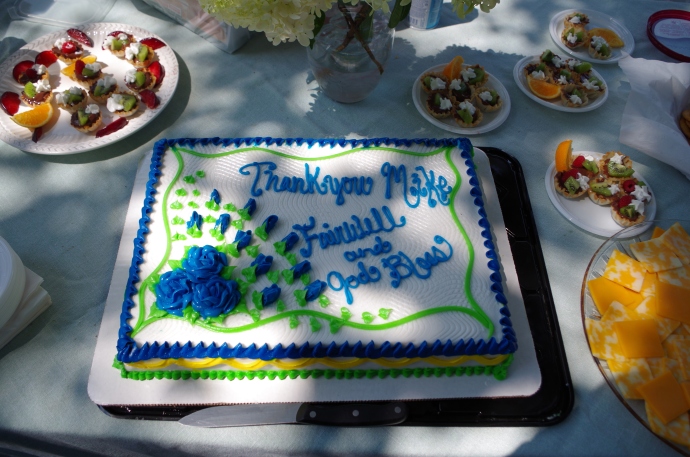
It is always fascinating to me, whether I become a Mike or a Michael in a place – and I was VERY much a Mike here in Saint Mary’s County
After preaching and sweating in the cassock… I went out into the humid southern Maryland air to sweat in my cassock some more, and to spend time with the people who have been the central focus of my summer and internship! The typical coffee hour deliciousness (for, as many of the other posts for this blog during my time here will attest, this parish takes food DEADLY seriously) was supplemented with a nice little cake as seen above.

Linda Ball, the priest’s wife, doing the St. Mary’s Parish thing to do – making sure any event involving food, even just post-service coffee hour, is *spectacular*
The church was already so deeply generous to me, in helping cover my portion of the rent at their new house of ministry and prayer, and in the warmth and richness of friendships made… so I was surprised and delighted that they sent me off with a few other thoughtful odds and ends too!! From a book about growing crops the winter long in the northern US with unheated greenhouses (as I am likely going to be home for a set of months in Cleveland and want to garden even in the snow!!); to a book about spiritual formation over the course of a year in community with others; a framed local artist’s rendition of the Trinity Church building as seen from the St. Mary’s River; a woven cross necklace from Eithiopia (matching those worn by the rector and vergers alike); several thoughtful cards; a bag of the most stupidly delicious coconut macaroons ever; and then a series of 6 glass baubles:
As Father John took the time to carefully explain for the church and I alike during the service, he chosen each of these carefully based on the strengths and needs he observed in me over the course of the summer, and wanted me to try and carry one or more with me whenever I could do so. The fact is, if I look at the one labeled “Serenity” and do a combination of rolling my eyes AND seeking some sort of busy make-work… perhaps John was right with that and the other 5 diagnoses of my character, those both good and to-be-improved!

The stones Father John gave me, to carry in my pockets for as long as I can. Weights worth bearing, he intoned before the congregation.
______________________________________________________
Internship, and thus seminary education: finished
So then, since I am not sure if or when next I will wear a cassock or alb or the like, a final photo of me in an Anglican liturgical get-up:
Next steps for me are not yet set in stone, but I am pursuing jobs from Baltimore Maryland all the way back to Cleveland Ohio. Once settled, I shall do a final post to point to the coming blog which will chronicle my next location and the journeys ahead of me thereat – so those loyal readers can continue to follow this continuing peculiar jaunt of mine around this peculiar world.
